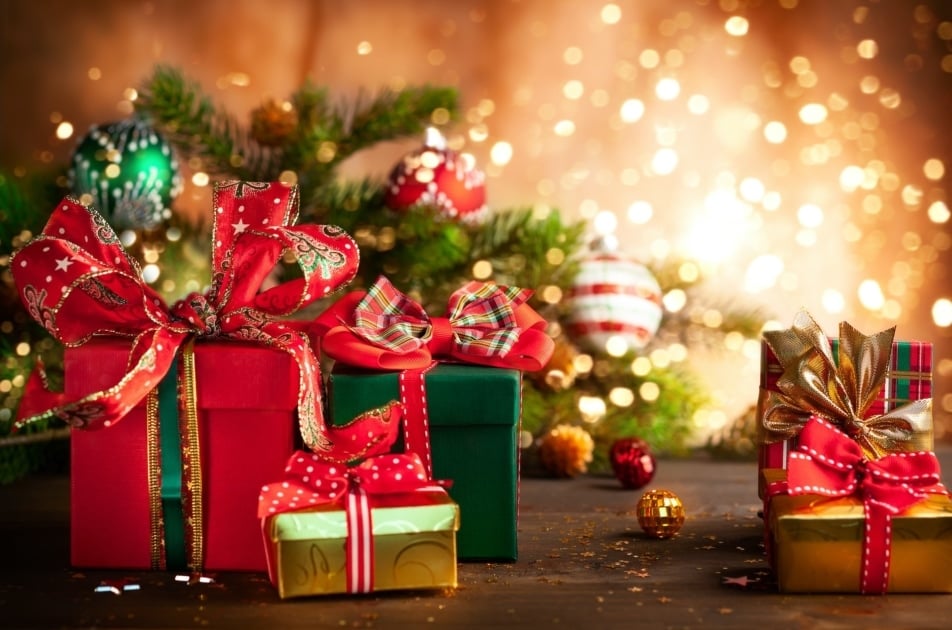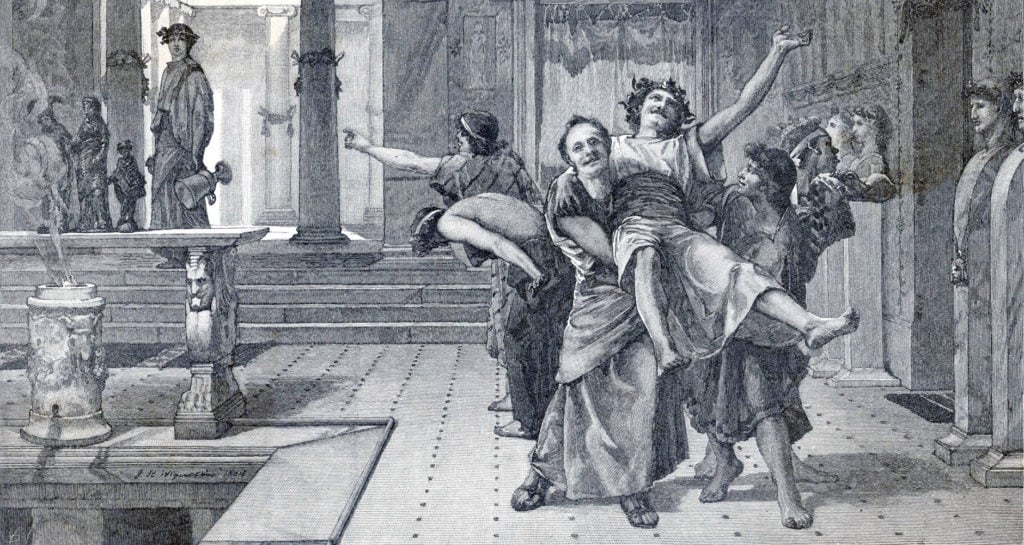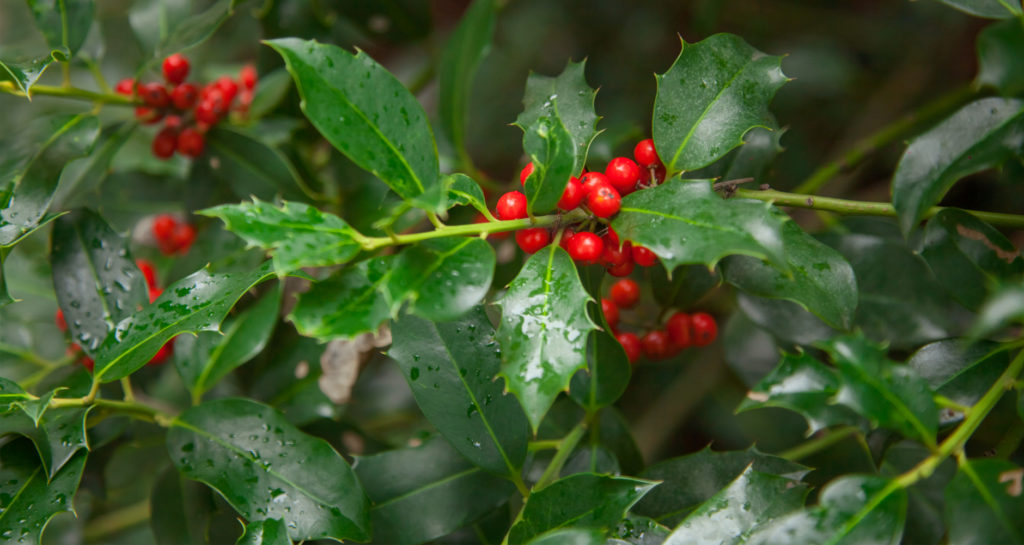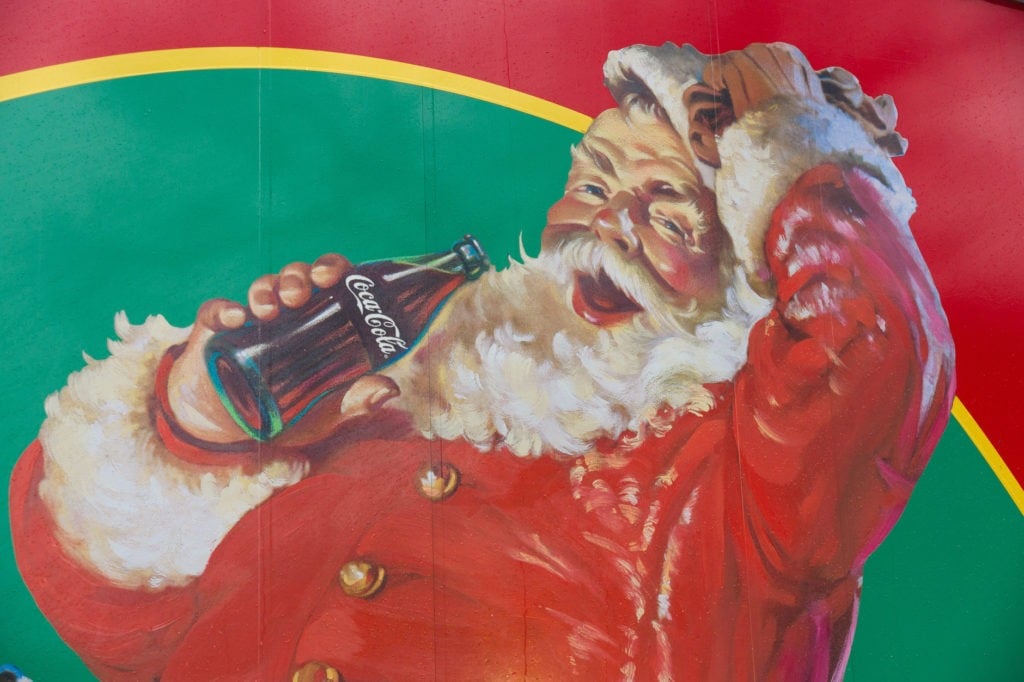Why Are Red and Green The Colors of Christmas?
'Tis the season for decking the halls with red and green, but did you ever wonder why these colors are associated with Christmas? We explain.

As the holidays bear down on us like a runaway sleigh, many of us are decking our halls with festive Christmas decorations of red and green. But how did these two colors become such an important part of our traditions? While no one knows for certain, there are several theories that lie in both ancient and modern traditions alike.
An Ancient Roman Winter Festival

In ancient times, Romans celebrated Saturnalia, an agrarian winter festival celebrated around the time of the winter solstice in honor of the god Saturn, who was, among other things, the god of sowing and seeds. When the winter planting was done, Romans celebrated with raucous abandon, feasting, drinking, and reversing social roles. In the name of fun, dress codes would be relaxed, there was gift giving, and charity and goodwill were expressed publicly and privately throughout the festival days. Homes were decorated with candles and evergreens including holly. The red berries and green leaves became associated with Saturnalia celebrations, and many of these traditions were absorbed into Christmas celebrations in Europe with the advent of Christianity.
The Christian Symbolism of Red and Green: Evergreens and Holly

The use of evergreens and holly for Christmas decorations continues to the present day. For Christians, the evergreen leaves, which don’t lose their color or die during the winter, are seen as a powerful symbol of the eternal life promised by Jesus Christ in the gospels. The sharp, pointy leaves of holly call to mind the crown of thorns, and its red berries are seen as emblematic of the blood shed on the cross. The death and resurrection of Jesus has become associated with the vibrant red and green boughs.
RELATED: How to Make Orange and Clove Pomander Balls
A Cola Influence?

In 1931, an illustrator named Haddon Hubbard “Sunny” Sundblom, working for Coca-Cola, created the iconic jolly Santa Claus as we know him today. Sundblom was inspired by Clement Moore’s 1822 poem, “A Visit from St. Nicholas” (better known as “‘Twas the Night Before Christmas”). In Victorian times, Santa was often portrayed as an elf, with miniature reindeer. It was Sundblom who transformed the character into the warm, happy, rosy cheeked bearded man wearing that iconic red suit that Americans grew to love (the particular shade of red borrowed from Coca-Cola’s branding). Sundblom used aspects of his own face in creating his Santa, and his work has influenced generations of merrymakers.
The Merriest Colors
Interestingly, if you take the colors of the rainbow (red, orange, yellow, green, blue, indigo, and violet) and arrange them in a continuous circle (a color wheel) red and green are found at opposite ends of the wheel, in an arrangement known as complementary colors. These color opposites, when shown together, create an effect in our eyes known as simultaneous contrast, which means they naturally “pop” or vibrate visually and grab a viewer’s attention. Today, we can’t see red and green together without thinking of Christmas.
May you all have a Merry Christmas and enjoy these rich traditions swathed in red and green!
This article was published by the Staff at FarmersAlmanac.com. Any questions? Contact us at [email protected].







The Coca-Cola Santa is the BEST Santa ever!
Thanks for the info and a Merry Christmas to you and yours
I always enjoy reading and learning in Farmers Almanac. Such great info and cool tips n tricks!
Thank you Heather. We do try to share interesting and informative articles here and in our print edition.
Thank you for the information and Merry Christmas to you ??
huh